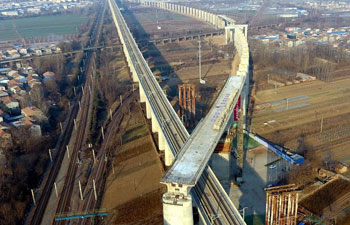ARUSHA, Tanzania, Dec. 19 (Xinhua) -- Tanzania's coffee production is expected to go down in the next harvesting season, due to prolonged drought in the key producing areas, the Tanzania Coffee Board (TCB) said on Tuesday.
TCB acting Director General, Primus Kimaryo, said that total coffee production in 2016/2017 is at an average of 50,000 tonnes, "but things will be different in the 2017/2018, whereby it is expected to be at an average of only 43,000 tonnes."
He cited prolonged drought in key coffee producing areas. The main growing regions in Tanzania include Kilimanjaro, Arusha, Tanga, Morogoro, Mbeya, Ruvuma, Iringa, Kigoma, and Kagera.
Coffee exports earned Tanzania 135 million U.S. dollars in foreign exchange during the 2015/2016 farming season.
Kimaryo, however, said: "We're currently training farmers on ways of mitigating climate change so that they continue producing quality coffee beans despite weather changes."
"We're also looking on new markets for our coffee so that what farmers produce get market," he said.
Tanzania is the fourth largest coffee producer in Africa behind Ethiopia, Uganda and Cote D'Ivoire.
Currently, most of the coffee from Tanzania is exported to Germany, Japan, Italy, Belgium and France.
Tanzania's Deputy Minister for Agriculture, Marry Mwanjelwa, viewed coffee as one of the country's foreign exchange earner, though there are myriad challenges including weather changes as well as smuggling.
"I know we have some challenges of coffee smuggling through 'direct coffee export' but I appeal to TCB to ensure there are no coffee smuggling incidents anymore," she said.
Coffee is one of Tanzanian's primary agricultural export crops, representing about 5 percent of total exports, 24 percent of traditional cash crops.
More than 90 percent of Tanzanian coffee comes from smallholder farmers. The industry provides direct income to more than 450,000 farmer families and also benefits directly the livelihoods of about two million Tanzanians, about one third of the population.















